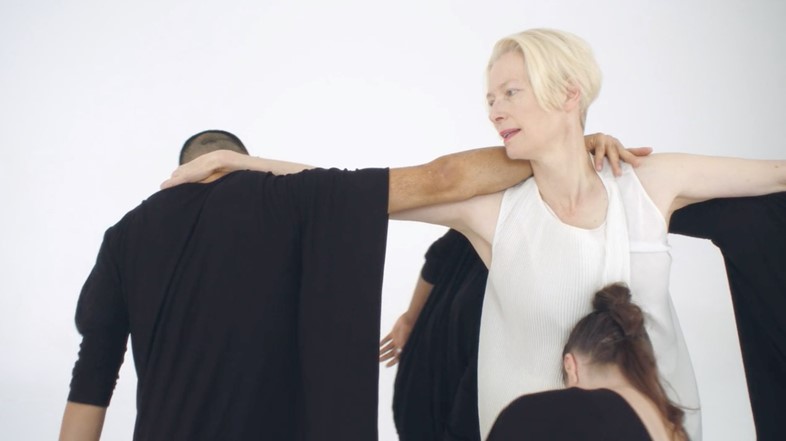ICCARRE is a groundbreaking programme reducing the amount of medication required by HIV/AIDS patients during treatment. Here, it presents a short film directed by Blanca Li and starring Tilda Swinton
The first of December marks World Aids Day: a moment to remember those who have succumbed to the disease since its sinister, global breakout in the early 1980s; a chance to join those who have fought to end the stigma attached to it; a time to show solidarity with the millions living with HIV today. Thanks in part to scientific advancements, our understanding and management of the virus has vastly improved in the 36 years since the first reported cases, but there is still a long way to go in terms of the medical treatment programmes offered to patients.
One such figure working towards the future treatments available for HIV/AIDS is Dr Jacques Leibowitch, a clinical researcher and medical doctor who aims to dramatically reduce the amount of anti-retroviral drugs required to manage the illness. In 2003, Leibowitch and his associates founded the ICCARRE programme, which stands for Intermittents en Cycles Courts les Anti-Rétroviraux Restent Efficaces – ‘taken in short cycles, anti-retrovirals remain effective’. It proposes that two to three anti-viral pills – taken two to four days weekly as opposed to the presently recommended seven days a week – is just as effective, and dramatically improves a patient’s quality of life.

Although its research is groundbreaking, ICCARRE’s programme is relatively unknown outside of French medical circles. Nonetheless, it has attracted the support of some of the world’s most prominent creatives – including Jean Paul Gaultier, Marie-Agnès Gillot and Blanca Li. The latter, a Spanish choreographer who has worked with the likes of Pedro Almodóvar and Michel Gondry, is a friend of Dr Leibowitch. For World Aids Day 2017, she comes together with the inimitable Tilda Swinton – also close to the medical professional – to produce a short film promoting the work of ICCARRE. “Being a good friend of both separately, they amicably came together to support ICCARRE,” says Dr Leibowitch. “They felt that it was not easy for us clinical scientists to reach out beyond academic circles so offered their help.”
The four-minute film shows Swinton, dressed all in white with her signature bleach-blonde crop, being gingerly passed around a troupe of Li’s dancers. As the choreographer explains, “I wanted it to be something that is very pure; very human. We’re talking about people who have to take medicines everyday and have to live with this everyday, and I think for me the film was very poetic, communicating the support that ICCARRE provides.” Artistic direction came courtesy of Jerry Stafford, who approached Nick Cave to provide the film’s soundtrack, the musician’s 2001 ballad Love Letter. “The song is about love,” says Li. “I think what ICCARRE is doing is about love too. The song gives the film another emotional dimension with the narration that I’m doing with the dance.”

Li’s film isn’t the first occasion that the emotional resonance of contemporary choreography has met with ICCARRE’s scientific grounding. In 2014, Li and Marie-Agnès Gillot performed for the first time together in honour of the programme’s work. “I think that for me dance is my way of expressing things,” she says. “I found out that with dance you can talk about almost everything. So I think the fact that the dance is an emotive language is very important, also because it will ensure that what the programme is trying to do will reach many people.”
The choreographer is quick to note that the project is particularly personal, as she has many friends currently in treatment. Indeed, HIV/AIDS markedly afflicted creative communities, with the arts suffering some of its greatest losses of the 20th century to the disease. Subsequently, ICCARRE’s marrying of art and science is particularly poignant. As Dr Leibowitch points out: “Artists resort to different language to convey important matters in words, images and gestures, that talk to the human spirit better than our scientific wording. Creatives may come along with ingenuity, emotions, feelings closer to the human vulnerability in times of hardship better than science possibly may.”